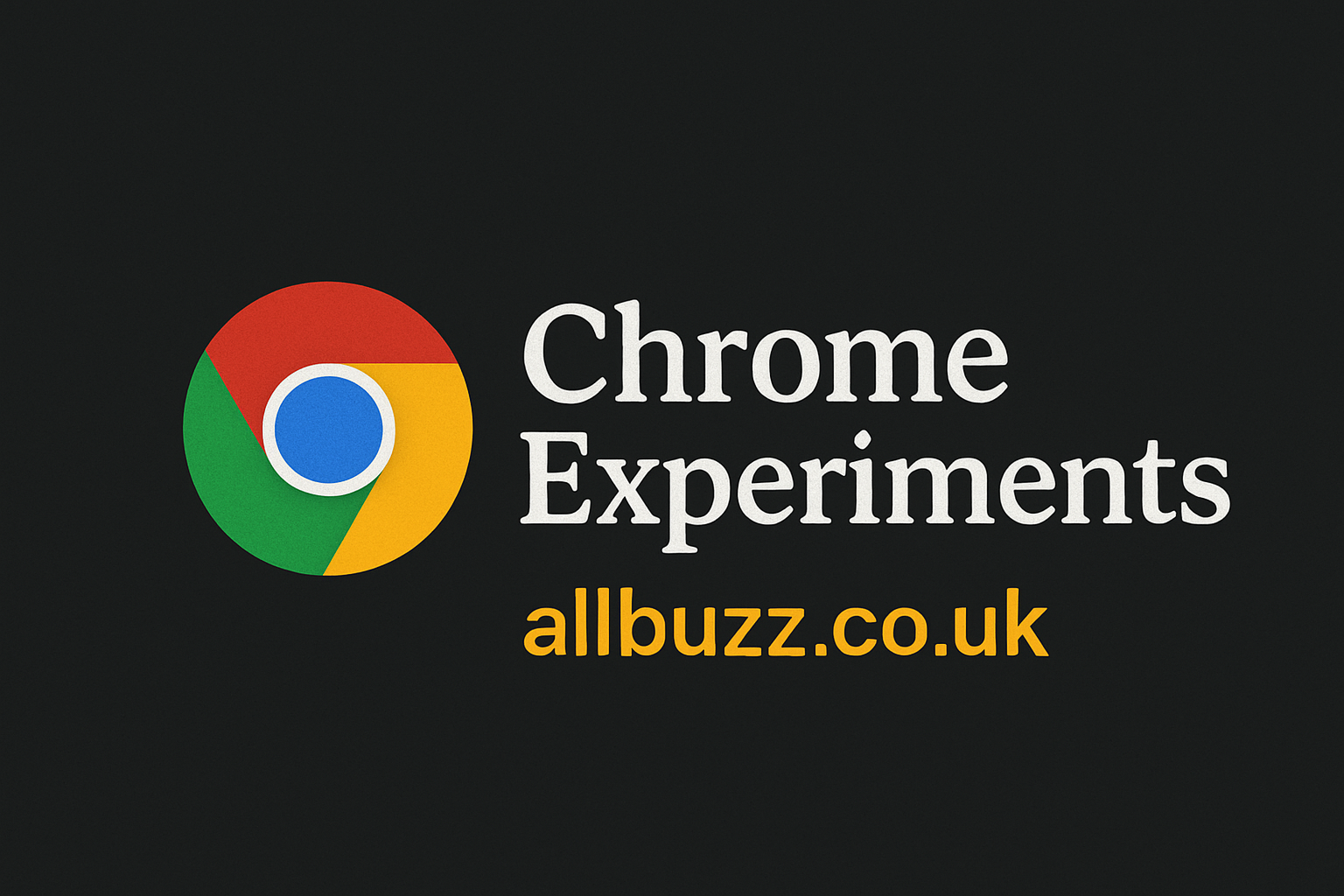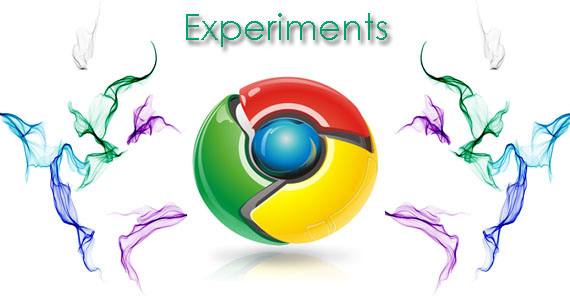Chrome Experiments: Exploring Creativity on the Web

Introduction: What Exactly Are Chrome Experiments?
When we hear the term “Chrome Experiments,” it might sound like a secret lab project from Google, but in reality, it’s something much cooler. Chrome Experiments is an online showcase launched by Google back in 2009, designed to highlight creative, fun, and interactive projects built using web technologies. Think of it as an art gallery, but instead of paintings and sculptures, you’re looking at mind-bending digital creations powered by JavaScript, WebGL, HTML5, AI, and more.
The main purpose of Chrome Experiments is to show what’s possible when developers push the boundaries of what the web can do. Instead of plain old websites, you’ll find music generators, games, interactive art, data visualizations, and even educational experiments that feel more like play than learning. It’s like stepping into a playground where code meets creativity.
What makes it unique is that Chrome Experiments is open to everyone. Developers from all over the world can submit their work, and if it meets the standard of creativity and innovation, it gets featured. That’s why you’ll see a mix of projects from both seasoned developers and beginners who had a crazy idea and decided to bring it to life.
The Origins of Chrome Experiments

Back in the late 2000s, the web was rapidly evolving. Browsers were getting faster, new programming capabilities were coming in, and people were beginning to realize that websites could be more than just static pages. Google, with its Chrome browser, wanted to showcase the power of the modern web. That’s how Chrome Experiments was born.
The idea was simple: create a central hub where developers could display innovative experiments that pushed the limits of what browsers could handle. The earliest experiments were fairly simple—things like cool animations or quirky interactive doodles. But even those early projects hinted at what was possible if you gave developers the freedom to innovate.
Fast forward to today, and Chrome Experiments has grown into a massive collection of thousands of projects. It’s no longer just about fancy animations; it has expanded into areas like machine learning, augmented reality, virtual reality, and even projects for education and science. This evolution reflects how far the internet itself has come in just a couple of decades.
Types of Chrome Experiments You Can Explore
One of the best parts about Chrome Experiments is the sheer variety of projects you’ll find. You’re not limited to one category—there’s something for everyone, whether you’re a gamer, a music lover, a data geek, or just someone who enjoys cool digital toys.
1. Interactive Art: Some experiments let you paint with digital brushes, manipulate 3D shapes, or even create generative art that evolves based on your input. These projects often blur the line between technology and traditional creativity. It’s fascinating to see how code can become a tool for self-expression.
2. Games and Fun Tools: If you’re into casual gaming, Chrome Experiments won’t disappoint. You’ll find clever browser-based games built entirely with JavaScript and WebGL. Some are as simple as a ball-bouncing simulator, while others are surprisingly complex, offering full 3D experiences—all inside your browser without downloading anything.
3. Music and Sound: This category is particularly interesting. Developers have created experiments where you can compose music, manipulate sound waves, or even create beats just by clicking around the screen. Google’s own “Chrome Music Lab” is one of the most popular collections, letting people of all ages learn about music in an interactive way.
4. Data Visualization and Education: Chrome Experiments isn’t just for fun—it can also be highly educational. Some experiments take complex topics, like global warming data or the movement of stars, and transform them into interactive visualizations that are both beautiful and easy to understand. It’s learning made entertaining.
Why Chrome Experiments Still Matter Today
In a world dominated by apps, social media, and endless online content, you might wonder—why should we care about Chrome Experiments? The answer lies in its role as a creative sandbox. It’s not just about fun projects; it’s about pushing the boundaries of what the web can do.
First, Chrome Experiments serves as an inspiration hub for developers. Many young coders have cited these projects as the spark that motivated them to dive into web development. Seeing what others can create with just a few lines of code can be incredibly empowering.
Second, it’s a testing ground for new technologies. Over the years, experiments have incorporated cutting-edge features like WebGL (for 3D graphics), WebRTC (for peer-to-peer communication), and TensorFlow.js (for machine learning). These experiments give developers and users a chance to explore tech in real-world scenarios long before it becomes mainstream.
Finally, Chrome Experiments is about democratizing creativity. Unlike traditional software, you don’t need expensive tools or high-end devices to participate. All you need is a browser, an idea, and some coding knowledge. This accessibility has made it a global platform where creativity knows no boundaries.
Chrome Music Lab: A Star Example
Among the many sub-projects, Chrome Music Lab deserves special mention. Launched in 2016, it quickly became one of the most beloved parts of Chrome Experiments. The Music Lab consists of a set of simple, colorful experiments that help people understand music concepts like rhythm, melody, and harmony in a fun, hands-on way.
For example, there’s the “Rhythm” experiment, where you can build drum patterns by clicking on squares, or the “Melody Maker,” where you create tunes by placing notes on a grid. Even complex concepts like spectrograms and oscillators are made approachable through playful design. It’s essentially music education reimagined for the digital age.
What makes Chrome Music Lab so impactful is its accessibility. It’s used in classrooms worldwide, from kindergarten to high school, because it doesn’t require special software—just a browser. Teachers love it because it makes music theory less intimidating, and students love it because it feels like play rather than work.
This project alone showcases what Chrome Experiments is all about: blending fun, education, and technology into something magical.
How Developers Can Get Involved
One of the coolest things about Chrome Experiments is that anyone can contribute. Google doesn’t limit it to big companies or elite developers. If you’ve built something unique using web technologies, you can submit it to the official Chrome Experiments site.
The submission process is fairly straightforward. You just need to provide a link to your experiment, along with a description of what it does and how it works. If it meets the creativity and performance standards, it gets added to the gallery for the world to see.
For developers, getting featured on Chrome Experiments can be a huge deal. It’s not just about recognition—it’s also a chance to inspire others, build a portfolio, and even attract job opportunities. Many developers have gained visibility in the tech community simply by showcasing their work on the platform.
The Future of Chrome Experiments
As technology continues to evolve, so will Chrome Experiments. We’re already seeing more projects that incorporate artificial intelligence, augmented reality, and virtual reality. With AI becoming more accessible, future experiments may allow users to create art or music alongside machine partners, blurring the line between human and artificial creativity.
We can also expect more cross-device experiences. Imagine starting an experiment on your phone, continuing it on your laptop, and finishing it on a VR headset—all seamlessly connected. As the web becomes more powerful, Chrome Experiments will likely lead the charge in showcasing these capabilities.
The future also holds promise for even greater educational integration. Just like Chrome Music Lab became a hit in schools, we may see entire sections of Chrome Experiments dedicated to teaching math, science, or even history in a way that’s both interactive and fun.
Conclusion: A Playground for Creativity
At its core, Chrome Experiments is more than just a collection of digital toys—it’s a symbol of what’s possible when creativity and technology collide. From interactive art to educational tools, from quirky games to serious data visualizations, it continues to inspire both developers and everyday internet users.
It reminds us that the web is not just a place to consume content but also a place to create, explore, and share. Whether you’re a coder looking for inspiration, a student learning through play, or simply someone curious about what the browser can do, Chrome Experiments offers a little something for everyone.
So the next time you’re looking for something new to try online, forget about mindlessly scrolling through social media. Instead, dive into Chrome Experiments—and discover the endless creativity waiting inside your browser.
